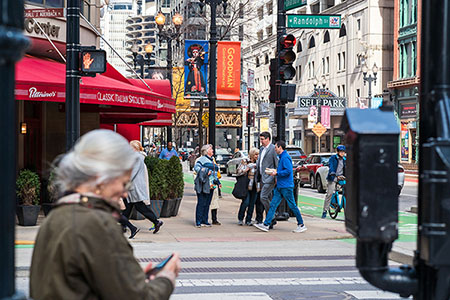
On November 17, the benchmark 30-year fixed-rate mortgage average spiked to 3.94 percent from 3.57 percent a week earlier, according to the Freddie Mac Primary Mortgage Market Survey. A year ago at this time, 30-year fixed-rate loans averaged 3.97 percent. 15-year fixed-rate loans averaged 3.14 percent on November 17, up from 2.88 percent a week earlier. A year ago, the 15-year fixed loans averaged 3.18 percent. “If rates stick at these levels, expect a final burst of home sales and refinances as ‘fence sitters’ try to beat further increases, then a marked slowdown in housing activity,” Becketti predicted. A Bankrate.com survey showed Chicago-area lenders were charging a range of 3.8 to 4.027 percent on benchmark 30-year fixed loans on November 18. Fed will increase funds rate, analysts predict Economic analysts are predicting the Federal Reserve Board is likely to hike the federal funds rate at its next meeting on December 13-14. The Fed last raised its benchmark rate in December 2015 and it now stands between 0.25 and 0.5 percent.
Analysts are predicting the Fed will hike the federal funds rate 0.25 percentage points. The result likely will be a quarter-point increase in 30-year fixed home loan rates, pushing them into the 4.25 percent range. A little history Mortgage rates hit a historical rock bottom on November 21, 2012, when the benchmark 30-year fixed mortgage average hit 3.31 percent, while 15-year fixed loans edged downward to 2.63 percent, Freddie Mac reported. In August 1999 – when many of today’s Millennial borrowers were in grammar school – lenders were quoting 8.15 percent on a 30-year fixed mortgage. According to Freddie Mac, benchmark 30-year mortgage rates peaked at a whopping 18.45 percent in October 1981 during the Great Recession of the 1980s. Rates fell below 10 percent in April 1986, then bounced in the 9-10 percent range during the balance of the 1980s. Archives of the now-defunct Federal Housing Finance Board show long-term mortgage rates were relatively affordable five decades ago at 5.81 to 5.94 percent between 1963 and 1965. In 1966 and 1967, borrowers paid an average of 6.3 to 6.4 percent. In the 1960s, rates last dipped below 6.5 percent in January 1968, when the national average hit 6.41 percent. Between 1971 and 1977, the now-defunct Illinois Usury Law held rates in the 7.6 to 9.0 percent range. |
















